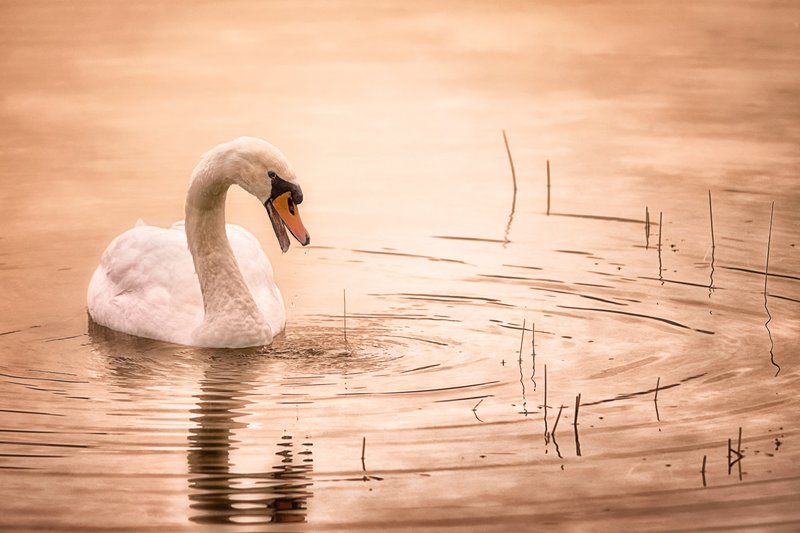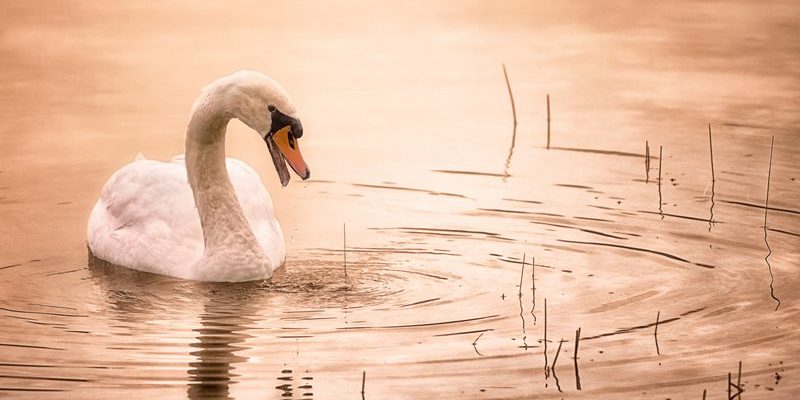
When thinking about swans, you might picture serene lakes, fairy tales, or dreamy landscapes. These birds have been around for millions of years, adapting to their environments and enacting a stunning ballet of evolution that’s as enchanting as it sounds. So grab a cup of coffee, and let’s dive into this unique journey through time, where swans have transformed not just as living beings, but also as cultural icons.
The Origins of Swans: A Peek into Prehistory
Swans belong to the family Anatidae, which includes ducks and geese. The earliest ancestors of these birds appeared around 50 million years ago, during the Eocene epoch. Back then, the world looked quite different—lush forests and abundant water bodies were common, providing perfect habitats for birds like swans to thrive. These ancient relatives likely had stout bodies and short necks, quite different from the graceful figures we associate with swans today.
As time progressed, swans began to diversify. They evolved into different species adapted to various climates and regions. The two primary types we commonly see today are the mute swan and the trumpeter swan, both of which have unique characteristics and behaviors. The mute swan, known for its silent demeanor, is often found in Europe and Asia, while the trumpeter swan, with its distinctive honking call, is native to North America. Can you imagine these birds modifying their adaptations just to survive in differing environments? It’s nature’s way of ensuring that life persists.
The Physical Characteristics of Swans
Swans are not just pretty faces; their physical traits tell a story of adaptation and survival. For starters, they’re known for their long necks, which can be up to one meter long! This unique feature allows swans to reach deeper into lakes and rivers for food. They primarily eat aquatic plants, but they’re known for munching on insects and small fish when necessary.
Their feathers are another key characteristic. A swan’s plumage is typically white, which helps them blend in with their aquatic surroundings, making them less visible to predators. Interestingly, there are species like the black swan found in Australia that showcase a stunning dark plumage. Imagine how captivating it would be to see a black swan gliding across a lake—it would almost look like a flying piece of a night sky.
Swans are also equipped with large webbed feet, which make them strong swimmers. Their powerful legs allow them to navigate swiftly through water, and this is not just for show. It’s an essential part of their survival, helping them escape from predators and find food quickly.
Swans in Culture and Mythology
Throughout history, swans have often held symbolic meanings in various cultures. In Greek mythology, for instance, swans are linked with beauty and romance. The legend says that swans sing beautiful songs just before their death. In contrast, many cultures view them as symbols of grace and loyalty. Isn’t it fascinating how a bird can embody such rich meanings?
The story of “The Ugly Duckling” by Hans Christian Andersen beautifully illustrates this idea, where a young bird is shunned for being different but ultimately transforms into a stunning swan. This tale highlights themes of acceptance and self-discovery that resonate with many people.
Additionally, swans have been used in art and literature to represent love and devotion. They are often seen pairing up for life, showcasing monogamous behavior that deepens their association with fidelity. Next time you see a pair of swans together, consider the story they tell about love and companionship.
Swans and Their Habitats
Swans thrive in both freshwater and saltwater habitats, but they prefer calm lakes, ponds, and marshes. Their choice of habitat is crucial for their survival, as these areas provide ample food and nesting sites. Interestingly, swans often return to the same nesting sites year after year, showcasing a strong sense of place.
These birds are generally migratory, depending on their species. For instance, the whooper swan migrates from breeding grounds in the Arctic to wintering spots in Europe and Asia. They travel in V-shaped formations, which not only helps conserve energy but also makes for a striking sight in the sky.
While swans are often drawn to peaceful habitats, they can also be quite adaptable. Urban environments have seen an increase in swan populations as they learn to navigate man-made bodies of water. It’s impressive how wildlife finds ways to coexist alongside humans, isn’t it?
The Conservation of Swans
Despite their beauty, many species of swans face challenges due to habitat destruction, pollution, and hunting. Conservation efforts are underway globally to protect these majestic birds and their environments. Organizations often focus on restoring wetlands, educating the public, and enforcing laws against poaching.
Interestingly, the mute swan was once considered a delicacy in Europe, leading to a significant decline in their populations. However, as awareness grew, conservationists worked hard to protect them. Now, they’re protected in many regions, showcasing the positive impact of conservation efforts.
As you learn more about swans, it’s essential to recognize how we can help preserve their habitats. Simple actions, like participating in clean-up efforts near local lakes or supporting conservation organizations, can go a long way in ensuring future generations enjoy these stunning birds.
Swans in the Modern World
Today, swans continue to enchant people worldwide. Their presence at parks, lakes, and ponds brings joy to many, serving as a reminder of nature’s beauty. Whether you’re out for a stroll or enjoying a picnic, spotting a swan can truly brighten your day.
Moreover, swans have also become popular in various media—films, stories, and art. Their graceful movements and regal appearance make them a favorite subject for photographers and artists alike. Think about the serene feeling you get when you see a swan gliding by; it’s no wonder they’re often featured in fairy tales and romantic tales.
Social media has allowed people to share their experiences with swans, creating a community around these birds. Pictures of swans can spark conversations about their beauty and the importance of conservation. It’s heartening to see the collective effort in promoting awareness for these creatures.
The history and evolution of swans is a story of resilience and beauty, weaving together elements of nature, culture, and human interaction. From their ancient ancestors to their modern-day symbolic meanings, swans continue to inspire enchantment and admiration.
As you observe these elegant birds, you might appreciate how they embody grace while reminding us of the delicate balance of our ecosystems. By understanding their history and the challenges they face, we can all play a part in ensuring these majestic creatures glide gracefully through our world for years to come. So, the next time you catch a glimpse of a swan, take a moment to appreciate the rich history behind it. It’s not just a bird; it’s a piece of nature’s artistry and resilience.

